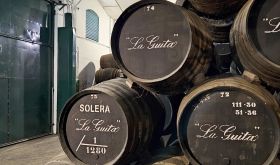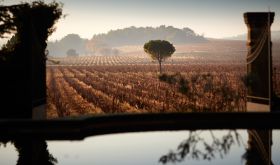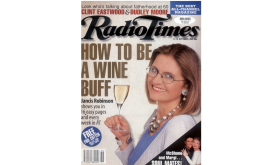From £74, €95, 91.55 Swiss francs, HK$820, $115, 950 Chinese yuan, SG$218, 26,620 Japanese yen, 5,850 New Taiwanese dollars, 6.8 million Vietnamese dong
I know we usually choose less expensive wines than this as our wine of the week but a recent tasting of 32 vintage 2009 wines from the smartest Bordeaux estates (including the first growths) demonstrated that Ch Duhart-Milon is both a star of the vintage and one of the least expensive 2009 crus classés. And it’s worth remembering that the appealing 2009 vintage is a fine one to be drinking now.
In this tasting, organised by Johnny Goedhuis of wine merchant Goedhuis & Co at the annual fundraiser for his learning disabilities initiative The Goed Life, only Ch Giscours and Domaine de Chevalier were less expensive. On a listing of in-bond case prices compiled by Goedhuis, Duhart was a relatively modest £475 a dozen.
I gave the Duhart 17.5 out of 20. The only wines I scored higher were Chx Figeac 18 (£1,300), Montrose 18 (£1,275) and the first growths (about £4,000) plus Ch La Mission Haut-Brion (£2,600). I’ll be publishing all my tasting notes, scores and suggested drinking dates early in December but meanwhile here’s my tasting note on the Duhart (not, as usual, recorded on my laptop but scribbled on a blessedly stiff cardboard wine list while being jostled by a crowd in evening dress getting ready for dinner in the Savoy Hotel’s River Room):
Magnum. Subtle, fragrant and slightly floral. Racy and transparent. No tannins in evidence. Very long and fresh. A very good Duhart that’s already drinking well! 17.5 Drink 2018–2032
You may wonder whether the fact that it was in magnum flattered the wine, but after the tasting I went back to look at previous notes on this wine in our 225,000-strong tasting-notes database and found four scores: of 17.5, 18, 17.5 and 18 in 2010, 2013, 2013 and 2019 respectively.
Duhart is the fourth-growth Pauillac that is owned and managed by the team at first growth Ch Lafite, and so benefits from some top-quality loving care and, presumably, some tiptop used barrels. There is no château as such and the wine is made in workmanlike premises in the town of Pauillac – with considerable flair, it would seem.
As with so many successful Bordeaux estates, Duhart, a bit further inland than Lafite, has grown in extent thanks to a series of vineyard acquisitions. It now has 76 of its hectares (188 acres) planted with vines, with nothing other than Cabernet Sauvignon and more Merlot than many Pauillac properties because of the land’s northern exposure at the northern limit of the Pauillac appellation.
This particular vintage is 63% Cabernet Sauvignon and 37% Merlot and the usual regime is to age it about 14 months in barriques of which about half are new and the other half presumably straight from the chai at Lafite. (Lafite always seems to be aged in particularly fine oak.)
An average of 350,000 bottles are made each year so this is one of our easiest Wines of the Week to find, It’s available at multiple merchants in the US, the UK France, Switzerland, Germany, the Netherlands, Belgium and Italy.
It’s particularly easy to find in Asia, especially that fine wine hub Hong Kong. The Chinese invested heavily in the 2009 vintage, boosting en primeur prices to record levels, and when the 2009s were released Duhart benefited from the magical aura around Lafite perceived by the Chinese. But today it is looking like a (relative) bargain.
Members can also see these other four tasting notes on Duhart-Milon 2009 and our 80 articles tagged Bordeaux 2009.














